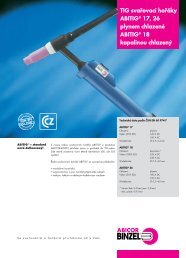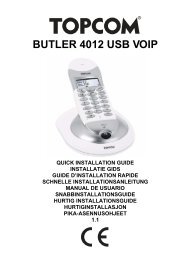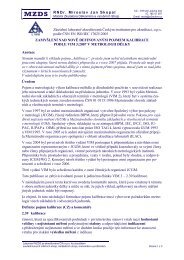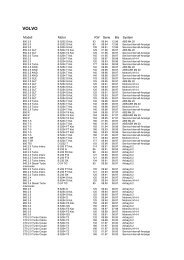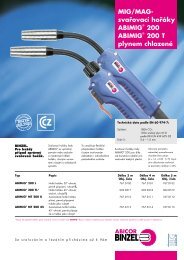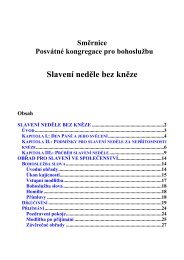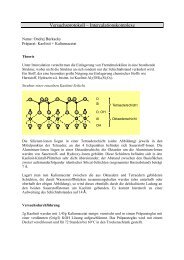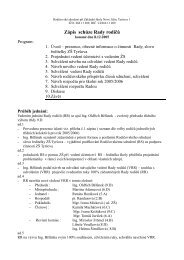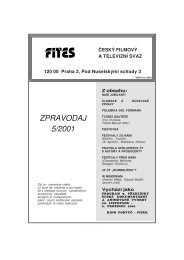HODGDON - QUICK.cz
HODGDON - QUICK.cz
HODGDON - QUICK.cz
Create successful ePaper yourself
Turn your PDF publications into a flip-book with our unique Google optimized e-Paper software.
PROPERTIES OF SMOKELESS POWDER continued<br />
If burning smokeless powder is confined, gas pressure will rise and eventually can cause the<br />
container to burst. Under such circumstances, the bursting of a strong container creates effects<br />
similar to an explosion.<br />
For this reason, the Department of Transportation (formerly Interstate Commerce Commission)<br />
sets specifications for shipping containers for propellants and requires tests of loaded containers<br />
– under actual fire conditions – before approving them for use.<br />
When smokeless powder in D.O.T. approved containers is ignited during such tests, container<br />
seams split open or lids pop off – to release gases and powder from confinement at low pressure.<br />
HOW TO CHECK SMOKELESS POWDER FOR DETERIORATION<br />
Although modern smokeless powders are basically free from deterioration under proper storage<br />
conditions, safe practices require a recognition of the signs of deterioration and its possible<br />
effects.<br />
Powder deterioration can be checked by opening the cap on the container and smelling the<br />
contents. Powder undergoing deterioration has an irritating acidic odor. (Don’t confuse this with<br />
common solvent odors such as alcohol, ether and acetone.)<br />
Check to make certain that powder is not exposed to extreme heat as this may cause deterioration.<br />
Such exposure produces an acidity which accelerates further reaction and has been known,<br />
because of the heat generated by the reaction, to cause spontaneous combustion.<br />
Never salvage powder from old cartridges and do not attempt to blend salvaged powder with new<br />
powder. Don’t accumulate old powder stocks.<br />
The best way to dispose of deteriorated smokeless powder is to burn it out in the open at an<br />
isolated location in small shallow piles (not over 1" deep). The quantity burned in any one pile<br />
should never exceed one pound. Use an ignition train of slow burning combustible material so that<br />
the person may retreat to a safe distance before powder is ignited. For more instructions call<br />
Hodgdon Powder.<br />
CONSIDERATIONS FOR STORAGE OF SMOKELESS POWDER<br />
Smokeless powder is intended to function by burning, so it must be protected against accidental<br />
exposure to flame, sparks or high temperatures.<br />
For these reasons, it is desirable that storage enclosures be made of insulating materials to protect<br />
the powder from external heat sources.<br />
Once smokeless powder begins to burn, it will normally continue to burn (and generate gas<br />
pressure) until it is consumed.<br />
D.O.T. approved containers are constructed to open up at low internal pressures to avoid the<br />
effects normally produced by the rupture or bursting of a strong container.<br />
Storage enclosures for smokeless powder should be constructed in a similar manner:<br />
1. Of fire-resistant and heat-insulating materials to protect contents from external heat.<br />
2. Sufficiently large to satisfactorily vent the gaseous products of combustion which would<br />
result if the quantity of smokeless powder within the enclosure accidentally ignited.<br />
If a small, tightly enclosed storage enclosure is loaded to capacity with containers of smokeless<br />
powder, the walls of the enclosure will expand or move outwards to release the gas pressure – if<br />
the powder in storage is accidentally ignited.<br />
Under such conditions, the effects of the release of gas pressure are similar or identical to the<br />
effects produced by an explosion.<br />
8



